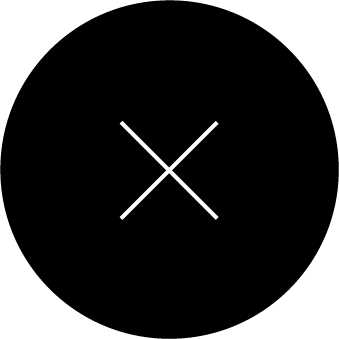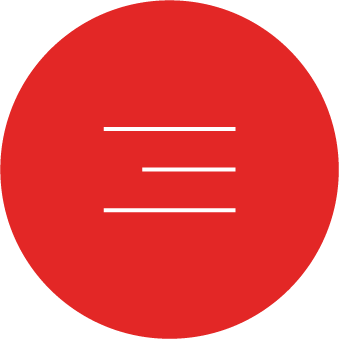What Working Client-Side Taught Me About Client Service

I have over a decade of experience in client services — only, I used to be the client.
As a member of Hilton Worldwide’s in-house creative team, I worked with all sorts of agencies, coordinating projects and keeping parties on schedule, on budget, and on brand. Today, I’m on the other side of the looking glass (that’s me!), working in client service at a content marketing agency.
The grass is more or less the same shade of green; client service means becoming a seamless extension of our clients’ teams, which means your turf is our turf. Your goals are our goals. But my experiences on the other side have been useful — they’ve equipped me to be a good agency partner and become part of D Custom’s mission: great marketing and happy clients. I know firsthand what clients expect from an agency. This helps me understand and anticipate their needs.
Everyone’s heard horror stories of bad client service, but what’s stood out to me the most are the truly great experiences I’ve had — the times when an agency taught me something I didn’t know or made something possible that I hadn’t yet imagined. I always keep that in mind: My job is not just to deliver materials, it’s to solve challenges, collaborate, strategize, demonstrate our proven methods, and test new ideas. This only works when I can build good relationships with my clients.
Below are what I consider the five most important lessons I’ve learned from being the client that have shaped my approach to serving my clients. Together, they’re my recipe for a strong and successful agency-partner relationship.
Related: You’re working in the digital age. Is your agency adapting with your business?
1. Approach all things with empathy.
This comes first because I believe everything runs on empathy. It’s the key not only to having a good relationship but also to accomplishing goals. If I’m going to help you achieve your business and marketing objectives, I need to understand what challenges you’re facing — whether that’s stakeholder alignment, internal communications and scheduling conflicts, budget, resources, or some unforeseen event. Ultimately, part of being on your team means being able to see things from your perspective.
What I found as the client: A lot of things were out of my control. At a large company, every project I managed went through a lot of hands and a long chain of command. I sometimes struggled to keep promises to my agencies, even though I still needed things on time from them. But I always shared their goal of accomplishing what we set out to do.
What I do now: I always remember that whatever the obstacle is, there’s a reason for it — and that obstacle is often more difficult for the client than for us. I find the best way to help is usually to ask for more information. What’s the reason for a roadblock or a rush? Often, there’s something we can do as an agency to problem-solve for you. As soon as we can diagnose the problem, we can find the cure.
2. Communicate; don’t coast.
There’s really no such thing as overcommunication. This one’s a no-brainer. But it’s also about the right communication — being transparent, specific, and clear on process, timelines, deadlines, responsibilities, and the rest. Luckily, I like to talk! And I like to get things done.
What I found as the client: I appreciated agency partners who took the initiative to make sure projects stayed on track, even if that meant a lot of follow-up and questions, instead of simply sitting back and waiting for me to drive conversations.
What I do now: First, I always map out to whom and through what steps the project needs to go in order to reach approval — then I build time for each step into your editorial calendar. That way, we can be realistic and aligned from the start, which takes the anxiety and uncertainty out of the creative process. We both need to know where we’re going and how to get there.
3. Have endless curiosity.
So I have a slight obsession with true crime and even almost studied forensic psychology. I like solving puzzles. I like marketing because that’s what we’re doing every day — working to get you from Point A (where you are) to Point B (your goal) and puzzling out how to do that. I think you have to have an inquisitive spirit to succeed in marketing. We have to be testers, tinkerers, inquirers. Our industry moves fast, so if we’re not, we’re probably going to fall behind. And to get to Point B, we have to ask a lot of questions.
What I found as the client: I didn’t know what an agency didn’t know unless they took the initiative and asked. The agencies who asked the right questions — and lots of them — delivered the best work. That means going beyond project specifications and brand guidelines, and approaching the work with true curiosity, questioning why things are a certain way and whether they could be different.
What I do now: I ask questions, always. Lots of them. And, of course, I do research. I don’t just want the information I need to deliver something — I want to learn everything I can about your business and industry in order to bring recommendations and strategies to the table. The path to Point B is rarely simple or clearly marked — it’s my job to figure it out. Otherwise, it wouldn’t be as fun.
4. Share knowledge and ideas.
Just as I had knowledge about my business to share with agencies, they had knowledge to share with me about their areas of expertise. It was always exciting to find there could be a new way of doing something that I hadn’t thought of. Usually, if instead of simply taking an assignment and running with it an agency shared new ideas and approaches, we’d end up with something even better than imagined.
What I found as the client: I enjoyed learning about a new concept or how a different deliverable could work, and I stored that knowledge away for future projects.
What I do now: I take time to share ideas and brainstorm. I always approach a project as a puzzle to untangle, not a task to complete. That’s how content becomes elevated, more creative, more imaginative, and more strategic.
5. Challenge the status quo.
The culmination of all the things I’ve discussed — empathy, communication, curiosity, and idea-sharing — is a willingness to challenge. The best agency-client relationships happen when the teams understand each other, have open communications, and share an enthusiasm for exploring possibilities. As an extension of your team, I usually feel comfortable questioning the status quo and asking for your thoughts. It keeps the momentum moving forward and ensures that we never get complacent.
What I found as the client: These kinds of conversations are almost always fruitful. And they let me know the agency was thinking about my business, not just executing.
What I do now: I like to shake things up, when appropriate. In addition to regular check-ins, status updates, and general project management, I’ll always try to think of ways to improve what we’re doing.
Well, there you have it. More complicated than my pasta recipe but, all in all, not so complicated. At the end of the day, agency-client relationships hinge on trust. These are just five ways I build trust with my clients — so they know I’m always thinking about them and what new puzzle I’m going to tackle for them tomorrow.
Interested in reading about other lessons we’ve learned from the marketing world? Subscribe to our newsletter for monthly insights from marketing and client services professionals.


